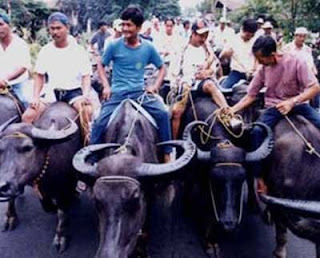Golden Week In Japan!
 |
Golden Week (GÅruden WÄ«ku), often abbreviated to simply GW and also known as ÅŒgon shÅ«kan ( "Golden Week") or ÅŒgata renkyÅ« ( "Large consecutive holiday") is a Japanese term applied to the period containing the following public holidays:
April 29
Emperor's Birthday (TennÅ tanjÅbi), until 1988
Greenery Day (Midori no hi), from 1989 until 2006
ShÅwa Day (ShÅwa no hi), from 2007
 |
| Perhaps a little kite flying during this holiday |
Constitution Memorial Day ( KenpÅ kinenbi)
May 4
Holiday (Kokumin no kyūjitsu), from 1985 until 2006
Greenery Day (Midori no hi), from 2007
May 5
Children's Day (Kodomo no hi), also customarily known as Boys' Day (Tango no sekku)
 |
| Heading out to a movie or dinner for Golden Week |
The National Holiday Laws, promulgated in July 1948, declared nine official holidays. Since many were concentrated in a week spanning the end of April to early May, many leisure-based industries experienced spikes in their revenues. The film industry was no exception. In 1951, the film JiyÅ« GakkÅ, recorded higher ticket sales during this holiday-filled week than any other time in the year (including New Year's and Obon). This prompted the managing director of Daiei Films to dub the week "Golden Week" based on the Japanese radio lingo “golden time,†which denotes the period with the highest listener ratings.
At the time, April 29 was a national holiday celebrating the birth of the ShÅwa Emperor. Upon his death in 1989, the day was renamed "Greenery Day."
In 2007, Greenery Day was moved to May 4, and April 29 was renamed ShÅwa Day to commemorate the late Emperor.
 |
| Heading out to a Shrine |
Current Practice
Many Japanese take paid time off on the intervening work days, but some companies also close down completely and give their employees time off. Golden Week is the longest vacation period of the year for many Japanese jobs. Two other holidays may also be observed for most or all of a week: Japanese New Year in January and Bon Festival in August. Golden Week is an extremely popular time to travel. Flights, trains, and hotels are often fully booked despite significantly higher rates at this time. Popular foreign destinations in Asia, Guam, Saipan, Hawaii, and major cities on the west coast of North America, such as Los Angeles, Seattle, San Diego, San Francisco, and Vancouver, as well as in Europe and Australia, are affected during these seasons by huge numbers of Japanese tourists.



Comments
Post a Comment